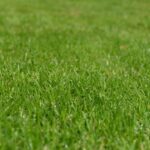
Advancing lawn technology has been at the core of Johnsons Lawn Seed’s business for nearly 200 years. Established in 1820, Johnsons is the oldest lawn seed brand in the UK with a long and prestigious record of product innovation, research and development and a pioneering grass breeding programme.
There are over 12,000 species of grass growing on every continent in the world – excluding Antarctica – where each is subject to different climate, soil, altitude, amount of sun and moisture. DLF – Johnsons Lawn Seed’s parent company – recognised the different benefits of each species and looked to create a programme of lawn seed that moved away from a global lawn seed variety and a “one size fits all” approach. Seed became more country specific, resulting in better yield and performance for UK conditions. Much of this was done under the company’s dedicated R&D programme. A huge part of its business, 1 in 10 members of staff now work under the R&D banner.
It takes 15 years of breeding and testing to bring a new lawn seed to market. The humble seed starts its life growing in a field at a nursery, where different varieties of seeds are put into trials or into various breeding schemes. Lines that are selected in breeding schemes are returned to the trialling scheme, first assessed in the pre-yield trials in Didbrook, Gloucestershire with successful lines going on to common trials at other European sites.
Many different breeding programmes take place in trials – synthetics, polycrosses, topcrosses, half sibs and bottlecrosses (see pull out box below). Once a plant has been deemed successful, the journey doesn’t end there. Many different varieties will be tested and planted together to create different combinations which ultimately, when harvested together, will create the most exemplary seed blends.
Each separate variety is checked regularly by farmers who work closely with DLF’s experienced field advisors. Expert data is gathered through scoring using the Haldrup and drone imaging to ensure the consistent treatment of all the plots. Seed homogeneity is checked to ensure all plants look the same, as are weed seed levels and cross pollination to ensure quality is up to standard.
The seed is then harvested and cleaned with samples taken for testing. 30 highly qualified analysts in three laboratories based in Denmark and the Netherlands ensure that the seeds meet the EU required standards of the Community Plant Varierty Office. (C.P.V.O,) and deduct any weed or additional crop seeds.
This data is then fed back to breeders and product managers who then discuss the merit of a line and get a preview and understanding of the variety before widespread release. Once breeding and analysis has been completed, the seed is mixed and packaged at Johnsons facilities in Inkberrow, Worcestershire, before being distributed to garden centres and DIY stores for customers to purchase. Customer feedback is then collected and evaluated to ensure the new mixes continue to perform as intended.
www.johnsonslawnseed.com

